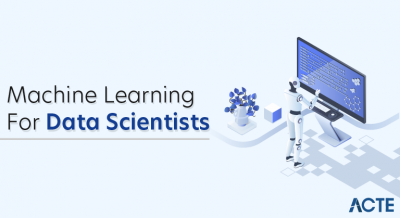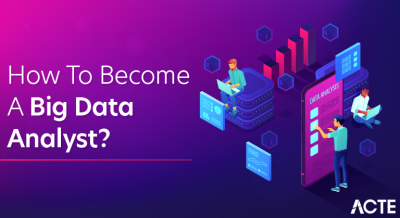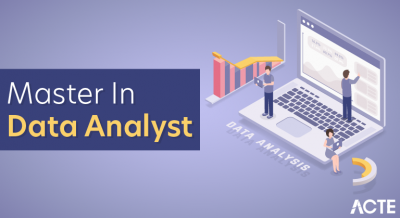
- Introduction to Data Science
- Educational Background Requirements
- Mathematics and Statistics Basics
- Programming Skills: Python, R, SQL
- Basic Understanding of Machine Learning
- Data Visualization Techniques
- Familiarity with Databases
- Tools and Technologies in Data Science
Introduction to Data Science
Data science is an interdisciplinary field that combines statistics, computer science, and domain knowledge to extract meaningful insights from data. With the exponential growth of digital data, organizations across industries are increasingly relying on data science to guide strategic decisions, optimize operations, and create innovative products and services. At its core, data science involves the entire data lifecycle collecting, cleaning, analyzing, and visualizing data. It also includes building predictive models using machine learning techniques to forecast future trends and behaviors. Data scientists use tools like Python, R, SQL, and visualization platforms such as Tableau or Power BI to perform their analyses, skills developed through Data Science Training. The field is highly collaborative, often requiring data scientists to work closely with business leaders, engineers, and analysts. This collaboration ensures that technical findings are translated into actionable business strategies. Whether it’s improving customer experience, detecting fraud, or optimizing supply chains, data science plays a vital role in solving real-world problems. As demand for data-driven decision-making continues to rise, data science has emerged as one of the most sought-after and impactful career paths. Its dynamic nature offers endless learning opportunities, making it an exciting and rewarding field for curious and analytical minds.
Are You Interested in Learning More About Data Science? Sign Up For Our Data Science Course Training Today!
Educational Background Requirements
While there is no single educational path to becoming a data scientist, a strong academic background in quantitative fields is highly beneficial. Most data scientists hold at least a bachelor’s degree in disciplines such as computer science, statistics, mathematics, engineering, or economics. These fields provide a solid foundation in analytical thinking, problem-solving, and technical skills that are crucial for working with data, highlighting Reasons You Should Learn R, Python, & Hadoop. For more advanced or specialized roles, many employers prefer candidates with a master’s degree or Ph.D. in data science, machine learning, artificial intelligence, or related areas. Graduate programs often offer hands-on experience with real-world datasets and exposure to advanced modeling techniques, big data tools, and cloud computing platforms.
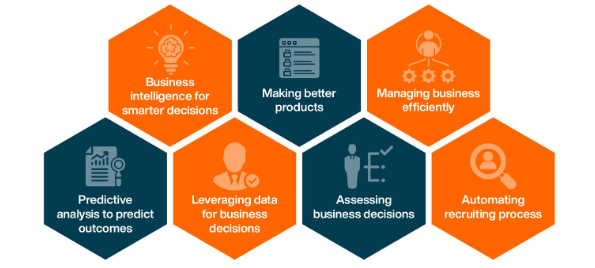
In recent years, alternative educational paths have also gained recognition. Online courses, bootcamps, and certification programs from platforms like Coursera, edX, and Udacity offer practical training in data science and can help build a strong portfolio. Regardless of the formal education path, employers value a combination of theoretical knowledge and practical experience. A strong grasp of programming, statistics, and machine learning, paired with the ability to work on real-world problems and communicate insights clearly, is often more important than a specific degree title.
Mathematics and Statistics Basics
- Inferential Statistics: Allows data scientists to make conclusions about populations based on sample data. It includes hypothesis testing, confidence intervals, and p-values.
- Regression Analysis: A core method for modeling relationships between variables. Linear regression is especially important for prediction and trend analysis.
- Combinatorics and Set Theory: Useful for understanding data structures, event probabilities, and grouping logic, especially in probability and data organization.
- Linear Algebra: Essential for machine learning and data manipulation, linear algebra deals with vectors, matrices, and operations like matrix multiplication, forming a foundation for Top Data Science Programming Languages.
- Calculus: Mainly differential calculus is important for optimization in machine learning. Understanding gradients and derivatives helps explain how algorithms like gradient descent work.
- Probability: Foundational for making predictions and modeling uncertainty. Key concepts include probability distributions, Bayes’ theorem, and conditional probability.
- Descriptive Statistics: Helps summarize and explore data. Concepts like mean, median, mode, variance, and standard deviation are used to describe data distributions and detect anomalies.
- Python: Widely used in data science for its readability and vast ecosystem of libraries such as Pandas, NumPy, Scikit-learn, and TensorFlow.
- R: A statistical programming language favored for data visualization and exploratory data analysis. It’s particularly strong in statistical modeling and academic research.
- SQL: Essential for querying and managing data in relational databases, SQL is a key skill taught in Data Science Training.
- Data Manipulation: Involves cleaning, transforming, and preparing raw data. Mastering libraries like Pandas (Python) or dplyr (R) is crucial for effective preprocessing.
- Data Visualization: Programming tools like Matplotlib, Seaborn, Plotly (Python), and ggplot2 (R) help create informative charts and dashboards to communicate insights.
- Version Control (Git): Git is critical for tracking changes, collaborating with teams, and managing code versions, especially in large projects.
- Scripting and Automation: Writing scripts to automate data pipelines, model training, and reporting increases efficiency and scalability in data workflows.
- Bar Charts: Ideal for comparing categorical data. They make it easy to visualize differences between groups and track changes over time when used in a series.
- Line Charts: Best for showing trends and patterns over continuous intervals like time. Commonly used in time series analysis to highlight upward or downward trends.
- Histograms: Used to display the distribution of numerical data by grouping values into bins. Useful for understanding the frequency and spread of data points.
- Scatter Plots: Help identify relationships or correlations between two numerical variables, a key concept in Machine Learning Vs Deep Learning.
- Box Plots: Provide a summary of data distribution, showing median, quartiles, and potential outliers. Excellent for comparing multiple groups.
- Heatmaps: Visualize data density or correlation using color intensity. Commonly used for correlation matrices or geographic data representation.
- Pie Charts and Donut Charts: Effective for showing parts of a whole, though best used with limited categories to maintain clarity.
To Explore Data Science in Depth, Check Out Our Comprehensive Data Science Course Training To Gain Insights From Our Experts!
Programming Skills: Python, R, SQL
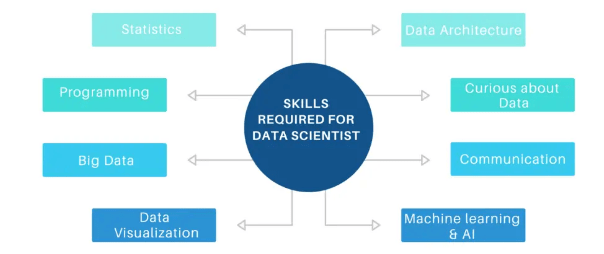
Basic Understanding of Machine Learning
A basic understanding of machine learning is a key requirement for anyone entering the field of data science. Machine learning (ML) is a subset of artificial intelligence that enables systems to learn from data and make predictions or decisions without being explicitly programmed. At its core, machine learning involves training models on historical data so they can identify patterns and make accurate forecasts on new data. There are three main types of machine learning: supervised learning, where models are trained on labeled data (e.g., regression and classification tasks); unsupervised learning, which deals with uncovering hidden patterns in unlabeled data; and reinforcement learning, where agents learn optimal actions through trial and error in a dynamic environment, all of which create diverse Python Career Opportunities. Key concepts in ML include feature selection, model evaluation, overfitting, and cross-validation. Tools like Scikit-learn, TensorFlow, and Keras make it easier to build and test machine learning models in Python. Even a basic grasp of how these algorithms work and when to apply them allows data scientists to move beyond descriptive analysis and toward predictive and prescriptive analytics. This knowledge helps in building smarter, data-driven solutions that improve decision-making and efficiency in real-world applications.
Gain Your Master’s Certification in Data Science by Enrolling in Our Data Science Masters Course.
Data Visualization Techniques
Familiarity with Databases
A strong understanding of databases is essential for anyone pursuing a career in data science. Databases are the foundation for storing, organizing, and retrieving the vast amounts of data that data scientists analyze. Structured Query Language (SQL) is the most commonly used tool for interacting with relational databases such as MySQL, PostgreSQL, and SQLite. It allows users to perform operations like querying, updating, filtering, joining, and aggregating data efficiently. In addition to relational databases, data scientists often work with NoSQL databases like MongoDB, Cassandra, and Redis, which are better suited for handling unstructured or semi-structured data such as JSON, logs, or social media feeds, and apply techniques like Logistic Regression for analysis. These databases provide greater flexibility in terms of data modeling and scalability. Understanding how to connect to databases, optimize queries, and ensure data integrity is crucial for efficient data analysis. Data scientists should also be familiar with database normalization, indexing, and data warehousing concepts to manage large datasets effectively. As businesses increasingly rely on data-driven decisions, the ability to work with various types of databases both on-premises and cloud-based is a highly valued skill. Familiarity with databases ensures that data scientists can access and prepare quality data for meaningful insights.
Preparing for Data Science Job? Have a Look at Our Blog on Data Science Interview Questions & Answer To Ace Your Interview!
Tools and Technologies in Data Science
Data science relies on a wide range of tools and technologies that help professionals collect, clean, analyze, visualize, and interpret data to drive insights and decision-making. At the core, programming languages like Python and R are widely used due to their simplicity and strong support for data analysis libraries such as Pandas, NumPy, Scikit-learn, and ggplot2. These languages allow data scientists to manipulate data and build machine learning models efficiently. Essential for querying and managing data in relational databases, SQL is a crucial part of Data Science Training, enabling data scientists to extract, filter, and aggregate data efficiently. When working with big data, frameworks like Apache Spark and Hadoop are essential for distributed computing and real-time data processing. Visualization is another key aspect of data science, with tools such as Tableau, Power BI, Matplotlib, and Seaborn helping professionals present insights in an accessible and interactive format. Additionally, Jupyter Notebooks and Google Colab are popular platforms for prototyping and sharing data science workflows. Cloud platforms such as AWS, Google Cloud Platform (GCP), and Microsoft Azure offer scalable environments for deploying models and managing data pipelines. Mastering these tools empowers data scientists to deliver impactful solutions across various industries.


